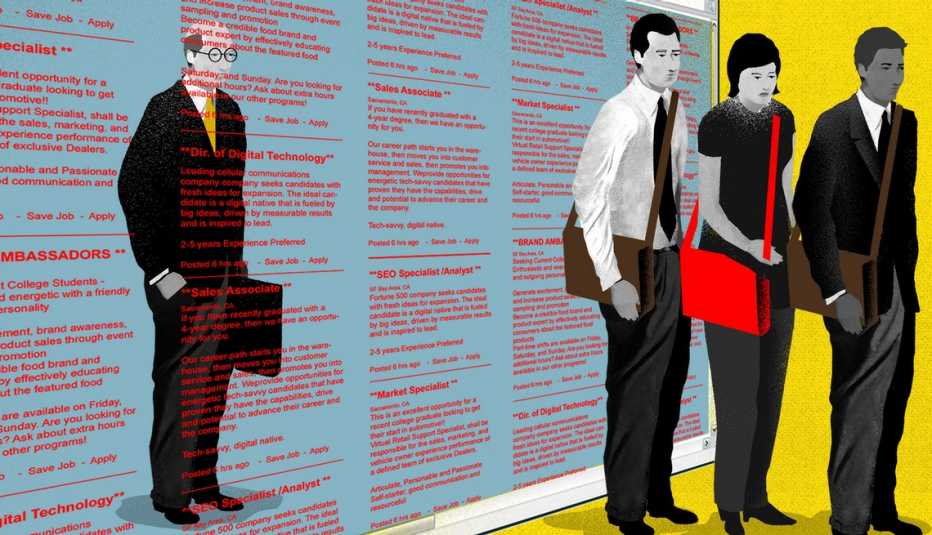Staying Fit
If you've ever felt like employers decide not to hire you as soon as they can literally see you and surmise how old you are, new evidence suggests you may be right.


AARP Membership— $12 for your first year when you sign up for Automatic Renewal
Get instant access to members-only products and hundreds of discounts, a free second membership, and a subscription to AARP the Magazine.
In a study released this month, researchers looked at the success rate of job seekers age 40 and older when they applied for positions at an unidentified national restaurant chain that recently was sued for age discrimination. Job hopefuls had two ways they could apply: in person or online. For the in-person option, they could go to a restaurant, fill out the job application and have a short interview with a manager on the spot. Older adults who applied this way — and who could be immediately judged by how old they looked — received job offers at a rate 68 percent lower than that for younger candidates who applied in person, according to the study from University of California, Irvine economics professor David Neumark, posted by the National Bureau of Economic Research.
For older adults who took the second route and applied online, the evidence is perhaps even more troubling. The online process required all candidates to take a test of about 100 questions to evaluate whether they had the skills in customer service, teamwork and memory retention to fit the restaurants’ jobs. Applicants did not have to reveal information about their age and, of course, couldn't be seen by recruiters. The older job seekers who used this option were chosen for interviews at rates equal to or higher than those for the younger applicants. But later, once the recruiters got a look at the older adults in face-to-face interviews, those candidates were offered jobs at a rate 40 percent lower than for younger candidates who had similar skills.
"This set of results is strongly consistent with age discrimination,” Neumark says. He notes that online applicants already proved they could handle the job when they took the test, which means “the far more plausible interpretation is that age … is the driving factor in reducing job offer rates to older applicants."
The study offers suggestions on how employers can fight bias against older applicants. Neumark says that for lower-skilled positions, employers might reconsider whether they really need face-to-face interviews. At the very least, employers could delay the interviews to keep the hiring age-blind as long as possible. Neumark also notes the example of orchestras that set up auditions in which candidates play behind screens so judges can't see whether the candidate is a man or a woman. That process, put in place to fight discrimination against women, resulted in more female musicians being hired.



































































